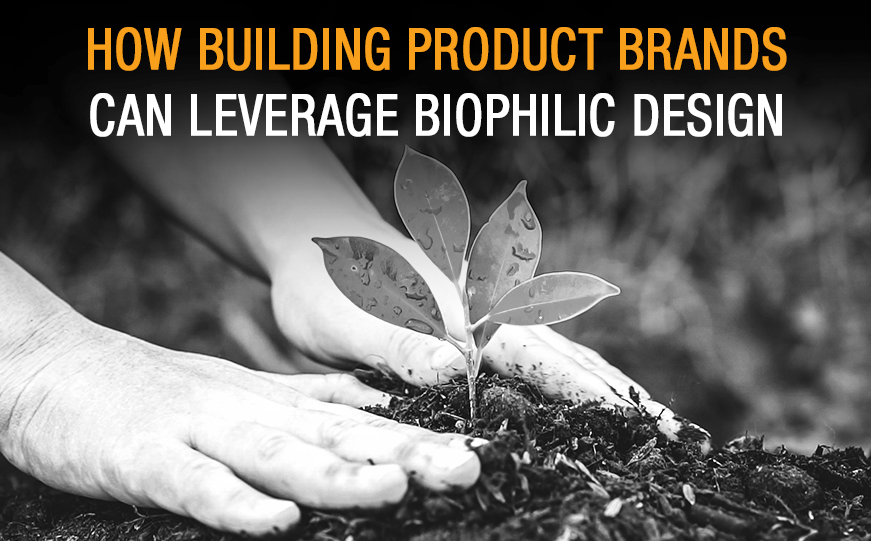With Earth Day just around the corner, we thought we’d take a deeper dive into an evolving trend: biophilic design.
Finding effective ways to incorporate key elements of the natural world into the built environment is not new. However, this approach has taken on increased emphasis as people spend more time in their homes. And realize the importance of feeling rooted — and in touch — with their natural surroundings.
What is biophilic design?
In its simplest form, biophilic design involves the incorporation of organic or nature-inspired materials and textures within architectural spaces. This allows inhabitants to feel connected… to the natural world.
Many studies, including “14 Patterns of Biophilic Design,” show how the application of biophilic design within built spaces can lower stress levels. And reduce heart rates or blood pressure… while improving creativity, productivity and overall well-being.
A growing number of design-build professionals are looking to bring elements from nature into the home through the use of biophilic principles. Considering the events we have all endured during the past year, the healing ability of nature is more important now than ever before.
Emphasizing water or fire elements. Adding greenery and natural light. Including accents crafted of stone or wood. Showcasing natural elements. All contribute to making a visual statement, while affirming our intrinsic need to stay rooted within nature.
The concept continues to grow as manufacturers are introducing products that incorporate biophilic principles. Just this past week, GE Lighting released GE sun filled™ LED bulbs, which replicate natural sunlight to help people maintain a natural sleep/wake cycle… so that they will feel more energized and alert in the mornings.
So, how can your building product brand take advantage of this growing trend?
Following are three ways to leverage biophilic design to help elevate your marketing.
Highlight connections between your products and nature
Many brands offer products with a direct tie-in to the natural world. For example, lighting, windows, natural stone surfaces, quartz countertops, or hardwood flooring… the connection is clear.
However, a wide range of products can contribute to biophilic design in less obvious ways. For example, siding colors that mimic environmental elements — greens, grays, browns and even blues — subtly remind homeowners of nature. As do showers with tiles in natural hues. Or soaking tubs in organic shapes.
It’s important to keep in mind that the products themselves don’t have to be crafted from natural materials. They just have to appear natural. Or have organic naming conventions. It’s the perception that matters.
Make sure to highlight your product’s connections to nature in marketing collateral. On your brand’s website. And in blog posts and videos. When photographing products, incorporate greenery and plenty of natural light to reinforce the relationship.
Create a bridge between indoor and outdoor spaces
The increased focus by homeowners on outdoor living provides many opportunities to incorporate biophilic design. For instance, installing deck railings with infill in organic patterns… such as waves or birds, or adding outdoor fire and water features.
Likewise, using wood soffits on a home’s exterior can mirror a wood ceiling inside the home. Or a stone patio can be echoed in a living room’s stacked stone fireplace.
Similarly, in interiors, incorporating railings with resin panels embedded with organic materials… such as grass and leaves brings a touch of nature inside.
Building product marketers can leverage the seamless flow between interior and exterior spaces. And spotlight how their products contribute to this popular trend — creating more cohesive and harmonious living environments.
Promote your brand’s sustainability
Even if your brand doesn’t have a direct tie-in to biophilic design, you can still focus attention on the eco-friendly aspects of your products. For example, do your brand’s products save water? Increase energy efficiency? Are they constructed using any recycled or recyclable materials?
Not only are more audiences looking for eco-friendly products, but a growing number of design-build professionals are opting to specify brands committed to sustainable design. Emphasizing in marketing and promotional materials how your brand contributes to sustainability… can help to create enduring affinity for your brand and offerings.
Don’t forget to have a conversation with your sales team to test your messaging. Solicit what they think will resonate best with customers and prospects. And then refine that messaging once you get feedback from the field.
Going Natural
Effective biophilic design removes the barriers between built and natural environments… promoting happiness and well-being. Building product brands that effectively create a narrative around this growing trend — and promote how their products support the desire for a connection to nature — will have a competitive advantage in a crowded marketplace.
Looking for creative ways to showcase how your brand supports the latest design trends? Send an email to sk@kleberandassociates.com.




